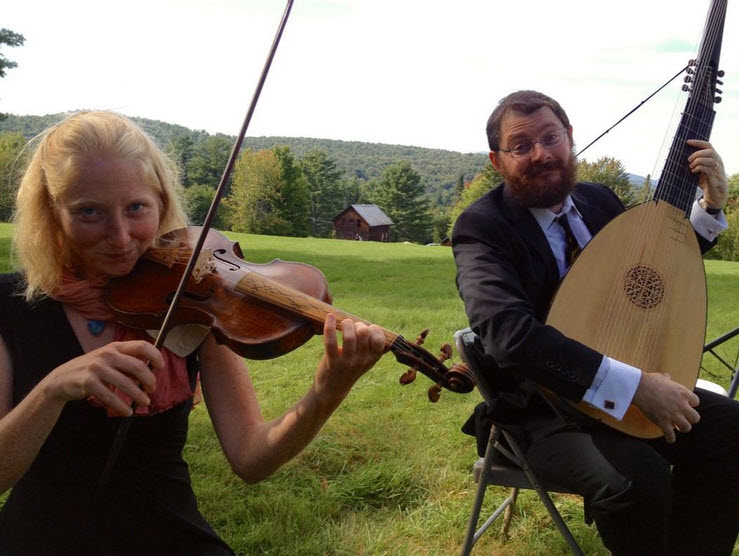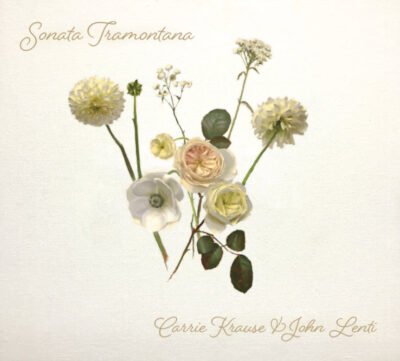by Stephanie Manning
Published July 23, 2023
Sonata Tramontana, Carrie Krause and John Lenti. Black Bear Records. UPC 195269239701

Plenty of Baroque music has been made in the mountains. In the 1600s, a number of composers lived or worked in the Italian and Austrian Alps — and that music inspired Carrie Krause and John Lenti’s new recording. The Baroque violinist and theorbo player live in Montana, a state named for its mountainous landscape. But compared to the Alps, the history of Baroque music in the eastern Rockies has been rather less entrenched.

Krause and Lenti, members of Baroque Music Montana, want to change that. The duo’s debut release, Sonata Tramontana, is billed the first period-instrument recording to be commercially released in Montana. Their selection of mid-17th-century solos and duets seeks to capture the state’s wild beauty.
The foundation of this record is the natural and organic feel to their music-making. In Johann Heinrich Schmelzer’s Sonata Tertia (1664), the duo are sensitive to the ebb and flow of each phrase, Krause stretching her diminuendos until her sound is whisper-quiet before Lenti gently pushes the line back into action.
The Big Sky Country is teeming with nature, but there is also an inherent loneliness associated with the open land. The duo explore this perspective through solo pieces that make for some of the most intimate music on the record. Guilio Caccini’s Amarilli mia bella, an undated work arranged by Lenti, emphasizes the theorbo player’s warm resonance and assured low register. The unhurried, thoughtful nature of his playing is reminiscent of a soliloquy. That patience is also reflected in his other solo, Bellerofonte Castaldi’s Lusinghevole passeggio.
Then it’s the violinist’s time to get personal. In Heinrich Ignaz Franz Biber’s Passacaglia in G minor (1674), the acoustics of Montana State University’s Reynolds Recital Hall give Krause’s sound just enough ring without the distance of an echo. Her playing feels lively, mournful, and always authentic.
The Biber transitions beautifully into Giovanni Antonio Pandolfi Mealli’s Sonata, Op. 3, “La Sabbatina” (1660). This was the piece that brought this duo together decades ago, and their interpretation feels as if it has held on to all of those memories. Its location at the midpoint of the recording, right after some solo works, makes the sonata form sound refreshing.
With so many mid-17th century sonatas on the recording, the emphasis is often on their similarities. But each has a few moments that make them stand out. Philipp Friedrich Böddecker’s Sonata from Sacra Partitura (1651) calls for a particular ferocity from both players, and Johann Heinrich Schmelzer’s Sonata Quarta from Sonatae unarum fidium (1664) includes a few tasteful pitch slidings for a bit of sparkle.
But in the end, it is the first piece that has the last word. Mealli’s La Monella Romanesca (1660) builds a slow wave from a still and tranquil opening to the vivacious and free climax and back. This duality makes the piece feel most like Montana.
The atmosphere of La Monella Romanesca is likely to conjure up images for its listeners — big open fields, backyard gatherings around the fire, or gazing up at the stars. Whatever your vision may be, Krause and Lenti’s recording invites you to experience their memories of the state they love so much.
Stephanie Manning is a regular correspondent for ClevelandClassical.com and served as a fellow at the 2022 Rubin Institute for Music Criticism. A graduate of Oberlin Conservatory, she currently studies journalism at Concordia University in Montreal.




